I have something really pretty and really festive for us today. I hope it doesn’t send you running for the hills. When recipe hybrids are good — think pretzel croissants, cronuts, donut-looking cakes, donut-tasting muffins, brownie cookies, and pretty much everything on one of my favorite wildly creative cooking blogs — it’s usually because the two desserts that are mashed up have more in common than just cleverness, elements in each that make each other better.
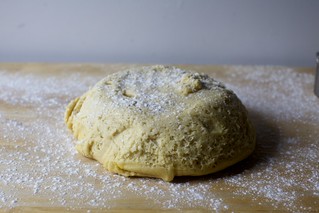
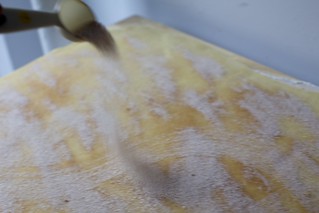
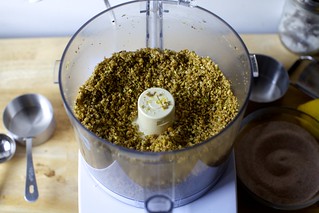
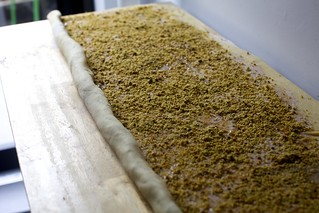
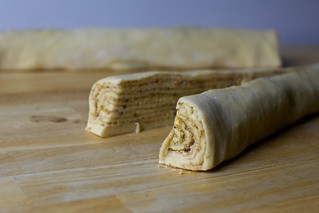

It was the honey syrup that convinced me that babka-meets-baklava could clear this hurdle. Syrupy finishes are common in desserts from across the Middle East and Levant. It’s the finishing soak in baklava’s crispy baked phyllo and chopped nuts layers, pulling them together. It’s the finishing, shiny soak in the kranz-style babkas popularized by Ottolenghi. And it’s what makes this buttery, nutty, braided sweet bread wreath sweet glossy perfection, and deeply baklava-like.
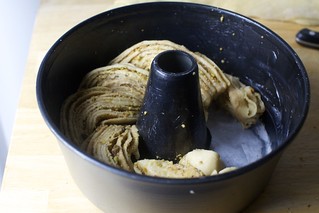

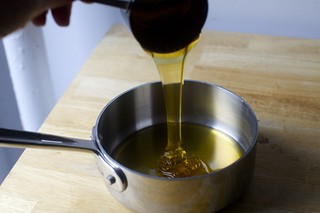
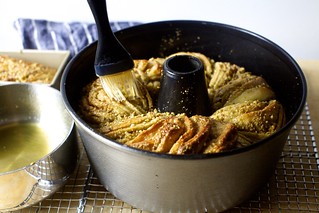
I first spied a baklava sweet bread on the gorgeous baking blog Sprinkles Bakes in 2014. There, it’s a pull-apart bread. But I always envisioned it as a babka, and one you’d make for a festive weekend meal, and with a lot of tweaking (some for structure, some to taste) it’s even better than I imagined. Here is where I tell you that it’s not nearly as much work as those fanned and woven layers would make it seem, and you will indeed run for the hills this time, but but but I promise, it’s also really hard to mess up, and I do try my best.

Most importantly, though: I hope it makes your home smell amazing. I hope it gives you an excuse to take a little break in the kitchen if you need it. And I hope you get to enjoy it with your favorite people.
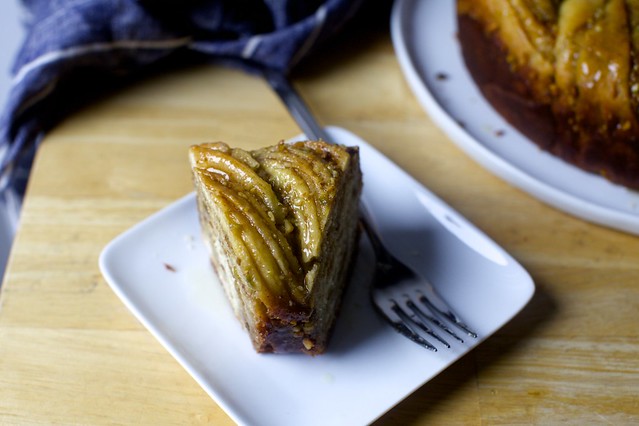
Previously
One year ago: Dutch Apple Pie
Two years ago: Homemade Irish Cream
Three years ago: Eggnog Waffles, The Browniest Cookies and Gingerbread Layer Cake
Four years ago: Jelly Doughnuts, Endives with Oranges and Almonds, and Deep Dark Gingerbread Waffles
Five years ago: Linzer Torte and Breakfast Slab Pie
Six years ago: Cashew Butter Balls
Seven years ago: Peppermint Hot Fudge Sauce and Parsnip Latkes with Horseradish and Dill
Eight years ago: Broiled Mussels and Spicy Gingerbread Cookies
Nine years ago: Creamed Mushrooms on Chive-Butter Toast and Ridiculously Easy Butterscotch Sauce, Why Cookies Spread and Mushroom Marsala Pasta with Artichokes
Ten years ago: Sausage-Stuffed Potatoes, Seven-Layer Cookies and Grasshopper Brownies
Eleven years ago: Espresso Chocolate Shortbread Cookies and Peanut Butter Cookies
Twelve years ago: Pecan Squares, Boozy Baked French Toast and Parmesan Black Pepper Biscotti
And for the other side of the world:
Six Months Ago: Ciambellone
1.5 Years Ago: Stovetop Americanos, Easy Drop Berry Shortcakes and Zucchini Grilled Cheese
2.5 Years Ago: Corn and Black Bean Weeknight Nachos and Funnel Cake
3.5 Years Ago: Strawberry Cornmeal Griddle Cakes and Strawberry Cheesecake Ice Cream Pie
4.5 Years Ago: Valerie’s French Chocolate Cake and Limonada de Coco
Baklava Babka
If you only have active dry yeast, it works fine here. Use the same amount but replace half the milk with water. Warm the water to 110 to 116 degrees (warm to the touch but not hot), stir the yeast into it and set it aside for 5 to 10 minutes, after which it will be slightly foamy. Then continue with as written. I find that active dry yeast doubles faster so keep an eye on the dough, but your experience may vary. (Instant yeast doesn’t need a warm liquid start and can be mixed into cold ingredients, as written below.)
I lightly toasted my nuts (350 degrees on a large tray, 8 minutes, then cooled) before using them here for best crunch and flavor.
- 6 tablespoons (85 grams) unsalted butter, melted and cooled
- 3/4 cup (175 ml) whole or low-fat milk
- 3 1/2 teaspoons (11 grams) instant yeast
- 3/4 cup (150 grams) granulated sugar
- 3 large eggs
- 1 1/2 teaspoons vanilla extract
- 4 1/2 cups (585 grams) all-purpose flour
- 1 teaspoon fine sea salt
- 2/3 cup (135 grams) granulated sugar
- 1 1/2 teaspoons ground cinnamon
- 2 cups (about 250 grams or 9 ounces) mixed nuts (I use one cup each of pistachios and walnuts)
- Finely grated zest of half a lemon or orange
- A few pinches of sea salt
- 1 teaspoon vanilla extract
- 1/4 to 1/2 teaspoon rose water or orange flower water (optional, to taste)
- 1/8 teaspoon ground cloves and/or cardamom (optional)
- 1/3 cup (95 grams) unsalted butter, melted
- 3/4 cup (250 grams) honey, any kind you like
- 3/4 cup (175 ml) water
- Pinch of sea salt
Dough
Filling
Honey syrup
Meanwhile, make the fillings: Combine cinnamon and sugar in a small bowl and set aside.
In the bowl of a food processor combine the nuts, salt, vanilla, and any other flavorings you plan to use until finely chopped but not like a powder or meal (think: couscous, or use my photos above as guidance). Set aside.
Prepare pan(s): Coat two 9-by-4-inch loaf pans (although slightly larger or smaller will work here too) or one tube pan with butter or nonstick spray, and line the bottom of each with a rectangle or donut-shaped ring of parchment paper for extra security.
Assemble babka(s): On a large, well-floured counter, roll out dough until it is about 24 inches wide (the side closest to you) and as long in length (away from you) as you can when rolling it thin, likely 12 to 14 inches. Dab last 1/2-inch (the edge furthest away from you) with water. Brush remainder of dough with melted butter. Sprinkle evenly with cinnamon sugar. Set aside 2 tablespoons of ground nuts and sprinkle the remainder over the cinnamon-sugar. Roll the dough up with the filling away from you into a long, tight tube. Seal the end to the roll as best as you can.
Let’s briefly have a side chat about shaping your babka(s): If you’re making two separate loaves, go ahead and cut this tube in two even lengths now. If you’re making a ring-shaped single babka, you can do this with one long twist or in two shorter ones. The former scared me a little so I divided mine in half. If you think you’re up for it, go for a single rope. (If it gets pesky, you can always lop it in half later, before you fit it in.)
I find it much easier to slice this roll neatly in half by transferring it to a large, lightly floured tray (bending it into a U-shape is fine if you’re trying to keep it in a single rope) and freezing it for 10 to 15 minutes, until firmer to the touch.
Shape your babka(s): Trim last 1/2-inch off each end of log. Gently saw the log(s) in half lengthwise (I use a long serrated knife) and lay them next to each other on the counter, cut sides up. Pinch the top ends gently together. Lift one side over the next, forming a twist and trying to keep the cut sides facing up (because they’re pretty). Don’t worry if this step makes a mess, just transfer the twist as best as you can into the prepared pan or pans. (An extra spatula or set of hands can make this lifting easier.) If you find it too pesky to make the single ring with one twisted rope, you can do it in two pieces, as I did, doing your best to tuck and twist the ends around each other.
I know you won’t believe me, but even if it looks like a total mess right now, even if your twists do not fill the pan, the dough will fill in any gaps by the time it is baked and will also look gorgeous once baked and glossy. It’s impossible to make this look ugly; I honestly tried my best and failed.
Let proof again: Cover the pan(s) with plastic wrap and let them rise in a warm place for about 45 minutes.
Heat your oven: To 350°F.
Bake babka(s): Sprinkle babka(s) with reserved nut mixture. Bake for 30 to 40 minutes, or until the tops are a deep golden brown. Baking times will vary due to size and number of twists. There are two ways to check for doneness: 1. The internal temperature will reach 185°F. 2. A skewer inserted into an underbaked babka will feel stretchy/rubbery inside and may come back with damp dough on it. When fully baked, you’ll feel almost no resistance. If you babka needs more time, put it back, 5 minutes at a time then re-test. If it browns too quickly, you can cover it with foil, but I don’t expect this to be necessary here.
While babka(s) are baking, make syrup: Combine honey, water, and a pinch of salt in a small saucepan and bring to a boil. Reduce to a simmer and cook until reduced by 1/3 (can eyeball it). Pour in a spouted bowl, if you have one, or just have a spoon and pastry brush nearby. As soon as the babka(s) leave the oven, pour and brush all the syrup over babka(s) — or leave a 1/4 cup behind for serving. It will seem like too much, but will taste just right — glossy and truly like baklava.
Let cool until lukewarm, then loosen babka(s) from sides of pans with a knife and transfer to a serving plate, patting yourself on the back for putting parchment paper at the bottom of the pan and making this easier. Serve lukewarm or at room temperature.
Store babkas: At room temperature for 3 days, or up to a week in the fridge, and a month or longer, triple-wrapped, in the freezer. I find most babkas not as great on the second and third days, but this recipe was the exception. Day three, currently, might be our favorite so far.
Source: http://feedproxy.google.com/~r/smittenkitchen/~3/xjzGW9v9L1s/